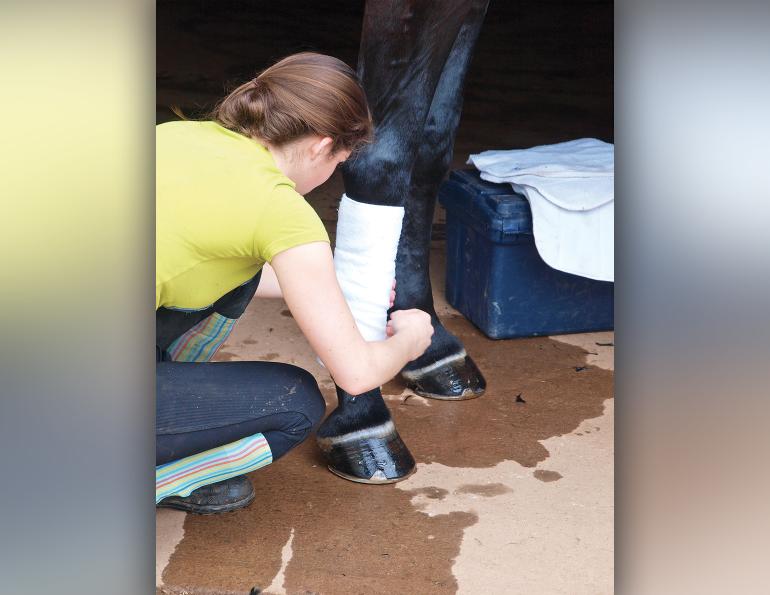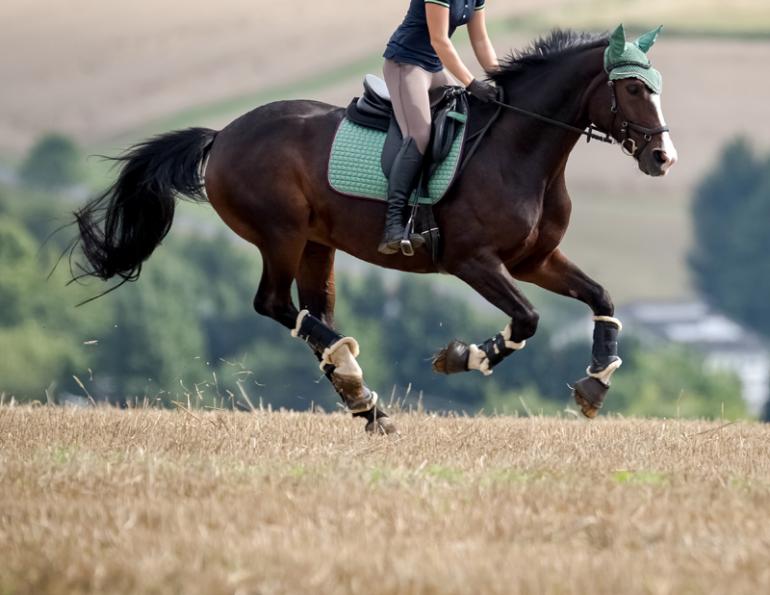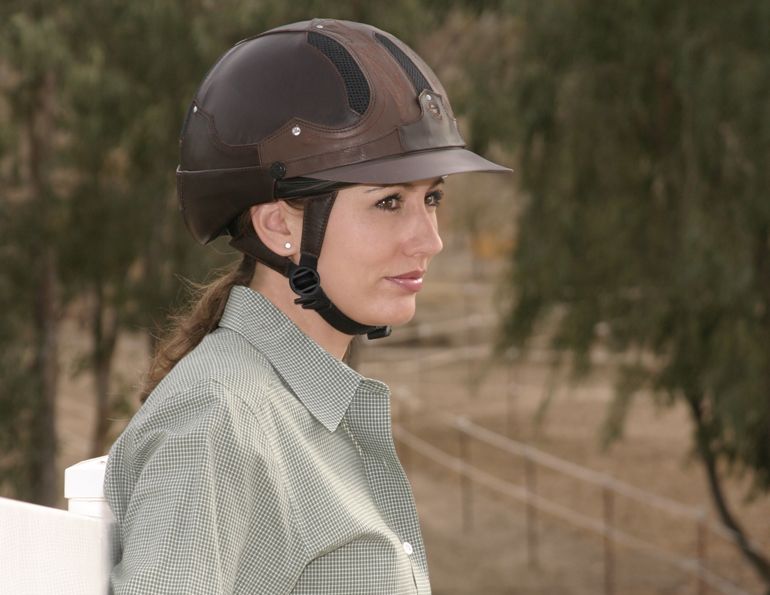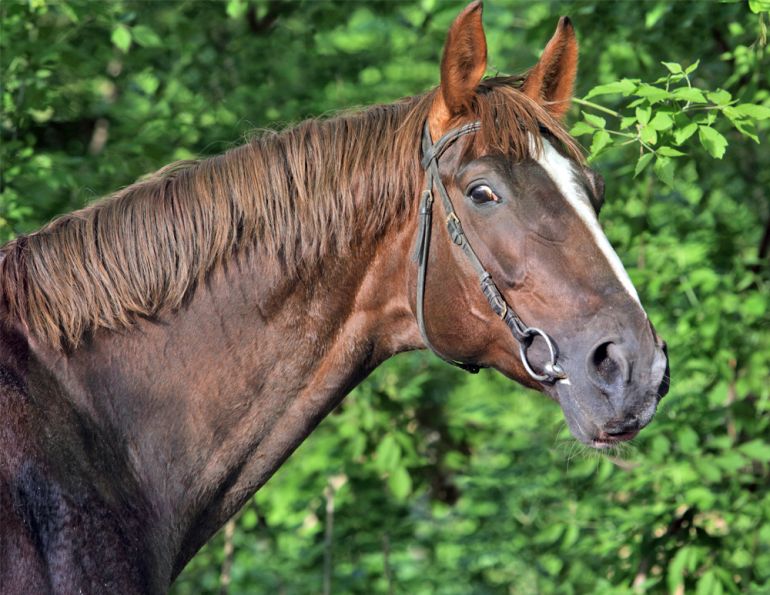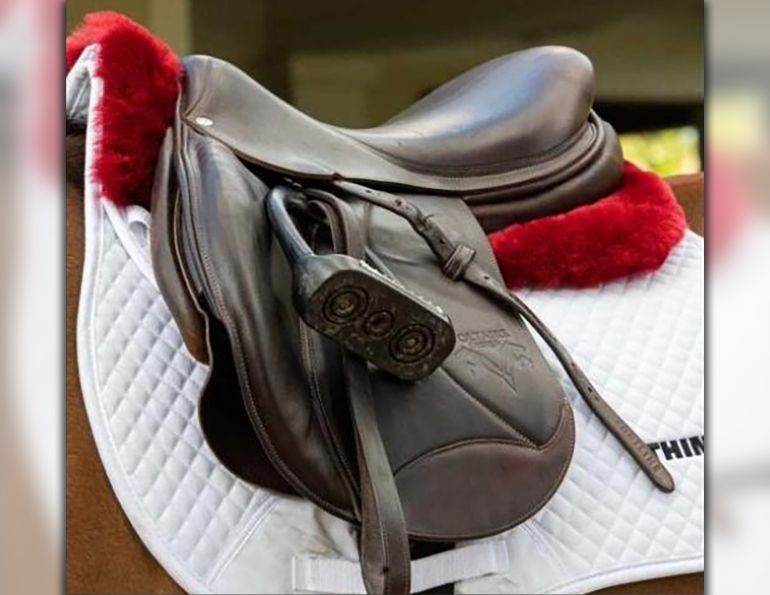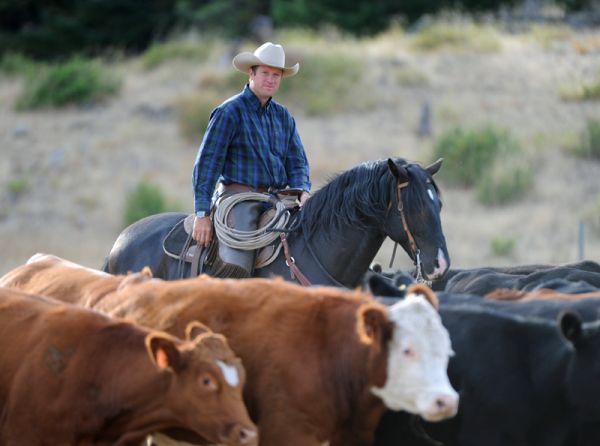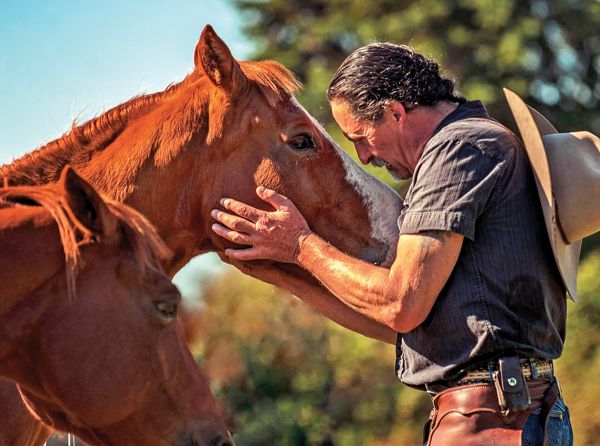Equine Guelph
Knowing how to wrap your horse's leg is an essential skill for the attentive horse owner. Questions such as What thickness of bandage should I use on my horse's leg? How do I know when wrapping my horse's leg is appropriate? What supplies do I need? are all very important. With help from this article, and a little practice, you will have master these skills in no time.
There are many reasons to bandage a horse’s legs, including to provide protection and support, to reduce the chance of post-workout swelling, and to hold a wound dressing in place and guard against infection.
You will need:
- Clean dry legs
- Clean dry cotton bandages which provide good cushion
- Clean dry wraps (non-elastic unless applying a pressure bandage)
If a wound is involved, you will also need:
- Gauze pads or a sterile, absorbent dressing
- Product to clean the wound with (as recommended by your veterinarian)
It is recommended that bandages are at least an inch thick and wraps are at least four inches wide and non-elastic. This, along with good wrapping technique, will help reduce the chance of restricted blood flow, uneven tension, and bowed tendons. Thinner cottons are recommended if you need to control severe bleeding (pressure bandage) just until the veterinarian arrives.
Related: Common Hoof Problems
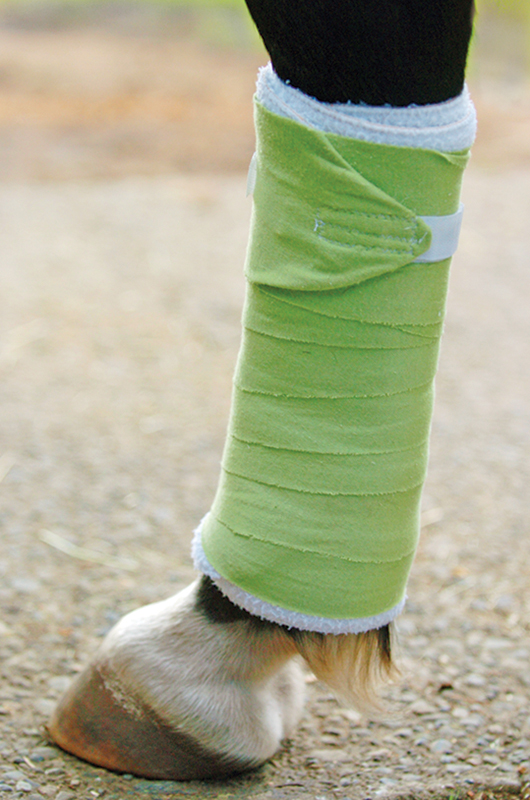
Photo: Robin Duncan Photography
Related: How to Select and Fit an Equestrian Riding Helmet
How To Wrap
Practice bandaging with a veterinarian or an industry professional as incorrect wrapping can cause injury.
- Start with tightly rolled wraps and bandages. This will make it easier to wrap neatly.
- Never kneel down — crouching allows you to move quickly should your horse move unexpectedly.
- If wrapping a wound, make sure it is cleansed and your sterile dressing is big enough to cover the entire wound, then secure in place.
- Start the stable cotton on the side of the leg, not on the tendon. It should measure from just below the knee to just below the fetlock joint.
- Always wrap tendons clockwise on the right side of your horse, counter-clockwise on the left side.
- Cover the cotton with your wrap starting above the fetlock joint. Work your way down in a spiral pattern with each wrap covering 50 percent of the wrap above.
- Work with even tension making sure no lumps or ridges form while you are wrapping.
- Leave a quarter inch of cotton showing below the fetlock joint and work your way back up the leg in the same spiral pattern, neither too tight nor too loose.
- Leave a quarter inch of cotton showing at the top and secure the Velcro® on the outside of the leg (Velcro® can be brushed open if it ends on the inside).
- If you add tape to secure your Velcro® closed it should not be applied tighter than the wrap.
Related: Scratching the Surface of Equine Skin Diseases
Unwrapping
- Check legs daily.
- Remove Velcro®.
- Unwrap swiftly from hand to hand. Never try to reroll a wrap on your horse’s leg.
- Give the leg a quick rub to increase circulation.
- Assess if rewrapping is required. If so, use clean bandages and wraps.
- Sanitize wraps so they are ready for their next use.
Other Guidelines and Tips:
- Wrapping too tight can cause pressure points and injury.
- Wraps should be free of wrinkles and have a stove pipe appearance.
- If you wrap one leg, wrap the opposite leg for support.
- To ensure even tension, the same person should wrap both legs.
- Do not begin or end a wrap over a joint — movement will tend to loosen the bandage and can endanger the horse if it becomes unwrapped.
- If wrapping to protect a wound on a joint use a figure-8 or spider bandage to allow movement. A stable wrap can be used below these first aid bandages to stabilize it.
- Shipping bandages should completely cover and protect the coronary band and bulbs of the heel.
- If unfamiliar with the horse, make sure the horse becomes accustomed to moving in the bandages before leaving him alone or loading him in a trailer.
- Practice makes perfect — if you are new to wrapping have a professional check your work.
Related: Clipping 101
WATCH How to Wrap a Horse's Leg
That’s a wrap!
Related: Equine Emergency First Aid
Related: How to Keep Rain from Ruining Your Leather Tack
Published with the kind permission of Equine Guelph.
Photo: Pam MacKenzie



